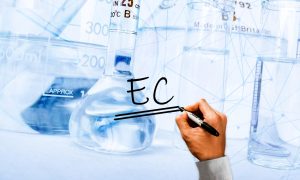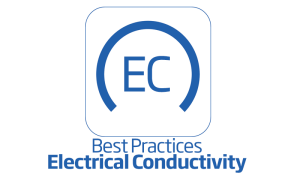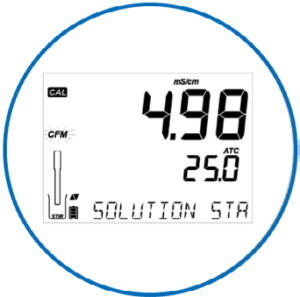
Calibrate
Clean and calibrated probe is always the first step. A clean and calibrated probe is the first step for obtaining accurate and repeatable results. When using a new four ring probe, remove the rubber ring inside the sheath covering the internal sensor. Inspect the probe prior to use. For calibration steps for the combination pH/EC probes, check out the pH Electrode Maintenance Guide or your manual.
Rinse the probe with purified (deionized) water and use an extra rinse beaker with standard. Remember that EC/TDS calibration standards have no buffering capacity. Try using a new/clean beaker with fresh standard as an additional rinse step before performing the calibration. This will help keep the standard for calibrating as free of contamination as possible.
Always use fresh standards. Do not reuse standards. Again, the calibration standards are easily contaminated. Do not use expired standards. Once opened, the standards are stable for only 3 to 6 months. Reference the manual. Some probes should have the standard stirring gently while calibrating.
Check the manual for instructions on your probe
Clean
Cleaning Procedure – Dirty, or improperly clean probes, can result in erratic and
inaccurate readings. Not only can this cause an issue with measurements, but also with calibrating. Remember, just
because a probe looks clean, it does not mean that it is.
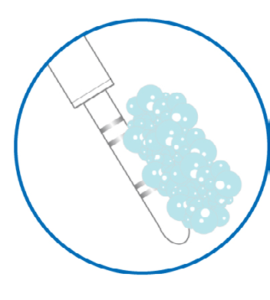
General Cleaning Procedure
Always rinse probes with purified (deionized) water before storage, after storage, and in between measurements. Water such as tap water can introduce different ionic contaminants to an EC probe, making it unsuitable as rinse water. For a more
thorough cleaning, a cloth and warm water with a soapy surfactant can be used. After washing with a surfactant, make sure to thoroughly rinse the probe clean with purified (deionized) water. Always beware of solvents of any sort when cleaning a two electrode probe or a four ring probe. Many solvents are not chemically compatible and can harm your probe (incompatibility of solvents with the plastic
bodies/housing can result in weakening, embrittlement, and other severe damage).
More Cleaning Tips
For a more in depth cleaning, some four ring probes can be disassembled. The outer plastic sheath can be removed in order to clean off build up and residues from the internal stem. Either purified water (deionized) or warm water/surfactant mixtures followed by a purified (deionized) water rinse can be used. Allow the pieces to dry, and then reassemble. For two electrode probes you can run cardboard in between
the electrodes to help remove debris. Just like four ring probes, two electrode probes can be rinsed either purified water (deionized) or warm water/surfactant mixtures
followed by a purified (deionized) water rinse to be thoroughly cleaned.
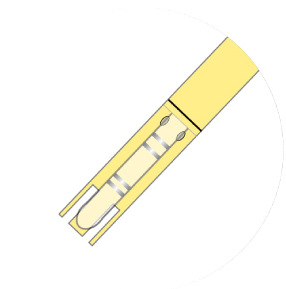
Store
EC probes should be stored clean and dry, unless you have a combination EC/pH probe. For storage steps for combination pH/EC probes, check out the pH Electrode Maintenance Guide or your manual.
We have put together this guide to serve as a quick reference tool. Always remember to consult the instruction manual or contact us directly for detailed instructions for your specific needs.
Did you like this short guide? Get your free sample here.
Stay tuned for more similar content from HANNA lab. Subscribe here.

